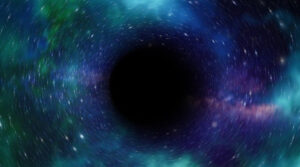Gaining an understanding of quantum gravity could help scientists uncover some of the Universe’s deepest mysteries.
A new experimental technique to measure extremely weak gravitational forces with remarkable precision has recently emerged. The scientists behind the development believe it could one day help probe quantum effects in gravity– a holy grail in modern theoretical physics.
“By understanding quantum gravity, we could solve some of the mysteries of our Universe — like how it began, what happens inside black holes, or uniting all forces into one big theory,” Tim Fuchs, a physicist at Leiden University and one of the authors of the study, explained in a press release.
Exploring quantum gravity
Although gravity is perhaps one of the most easily observed of all the fundamental forces, it has remained resistant to “quantization”, which is the incorporation of quantum theory that occurs on microscopic scales.
Quantum gravitational effects are too miniscule to be observed or be of relevance in most interactions of large bodies, such as stars and planets. However, they are expected to become “visible” when matter reaches intense densities and temperatures, orders of magnitude higher than anything we can achieve in a lab.
Since, the method proposed by the authors of the study emerges as a pivotal avenue for experimental exploration, potentially leading to a comprehensive theory of quantum gravity — an imperative for unraveling the Universe’s deepest mysteries.
These extreme conditions make quantum gravity very difficult to study experimentally. The energies of particles in accelerators are too low for quantum-gravitational effects to manifest in their collisions, and astronomical observations have also not yet provided any information about these effects.
But in their recent study, Fuchs and his colleagues propose a sensitive experiment that will allow them to delve into how slight deviations in the behavior of gravitating bodies might deviate from predictions made by Einstein’s theory of relativity, which describe gravity in classical terms. These deviations from classical behavior might encode previously unseen quantum effects in gravitational interactions.
“For a century, scientists have tried and failed to understand how gravity and quantum mechanics work together,” said Fuchs. “Now we have successfully measured gravitational signals at the smallest mass ever recorded, it means we are one step closer to finally realizing how it works in tandem.”
Observing the tiniest attraction
In their study, the authors used a superconducting magnetic trap to study the subtle attraction between masses used to create a sort of artificial gravitational field and a test mass used as a probe.
The 0.43 milligram test mass is a neodymium-iron-boron magnet that levitated over a superconductor made of tantalum. This lack of physical support makes the test mass extremely sensitive to any external influence.
The gravitational field under study was generated by three 2.45 kg masses, evenly spaced on a wheel, which was placed on the side of the magnet. The wheel’s rotation changes their distance to the test mass, altering the magnitude of the gravitational attraction between them.
To suppress all mechanical and thermal noise, the experimental apparatus was suspended on a multi-stage spring system and chilled to temperatures near absolute zero (-273.15 degrees Celsius).
In their experiment, the team were able to measure a minute displacement of the test mass, which allowed them to determine tiny changes in the gravitational attraction between the source masses and the test mass. This was on the order of tens of attoNewtons — 18 orders of magnitude lower compared to Earth’s gravitational pull on a 1 kg mass.
While initial measurements didn’t reveal deviations from classical gravitational theory, the researchers anticipate that by reducing noise, as well as the source mass to the scale of the test mass, they will be able to probe the variations in the gravitational field so small that quantum effects in gravity will become noticeable. “From here we will start scaling the source down using this technique until we reach the quantum world on both sides,” Fuchs said.
“We are pushing the boundaries of science that could lead to new discoveries about gravity and the quantum world,” concluded Hendrik Ulbricht, a professor of physics at Hendrik Ulbricht and a coauthor of the study.
“Our new technique that uses extremely cold temperatures and devices to isolate vibration of the particle will likely prove the way forward for measuring quantum gravity,” he continued. “Unraveling these mysteries will help us unlock more secrets about the Universe’s very fabric, from the tiniest particles to the grandest cosmic structures.”
Reference: Tjerk H. Oosterkamp, et al, Measuring gravity with milligram levitated masses, Science Advances (2024). DOI: 10.1126/sciadv.adk2949
Feature image credit: merlinlightpainting on Pixabay












+ There are no comments
Add yours